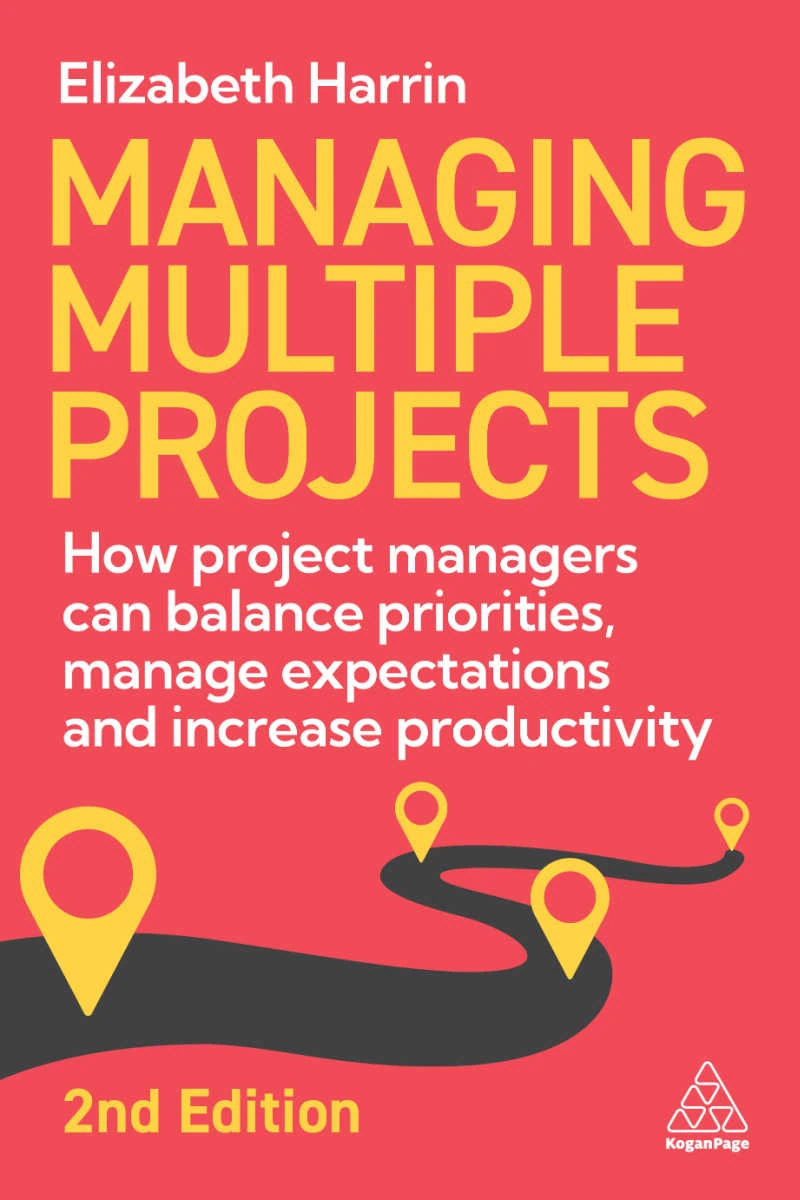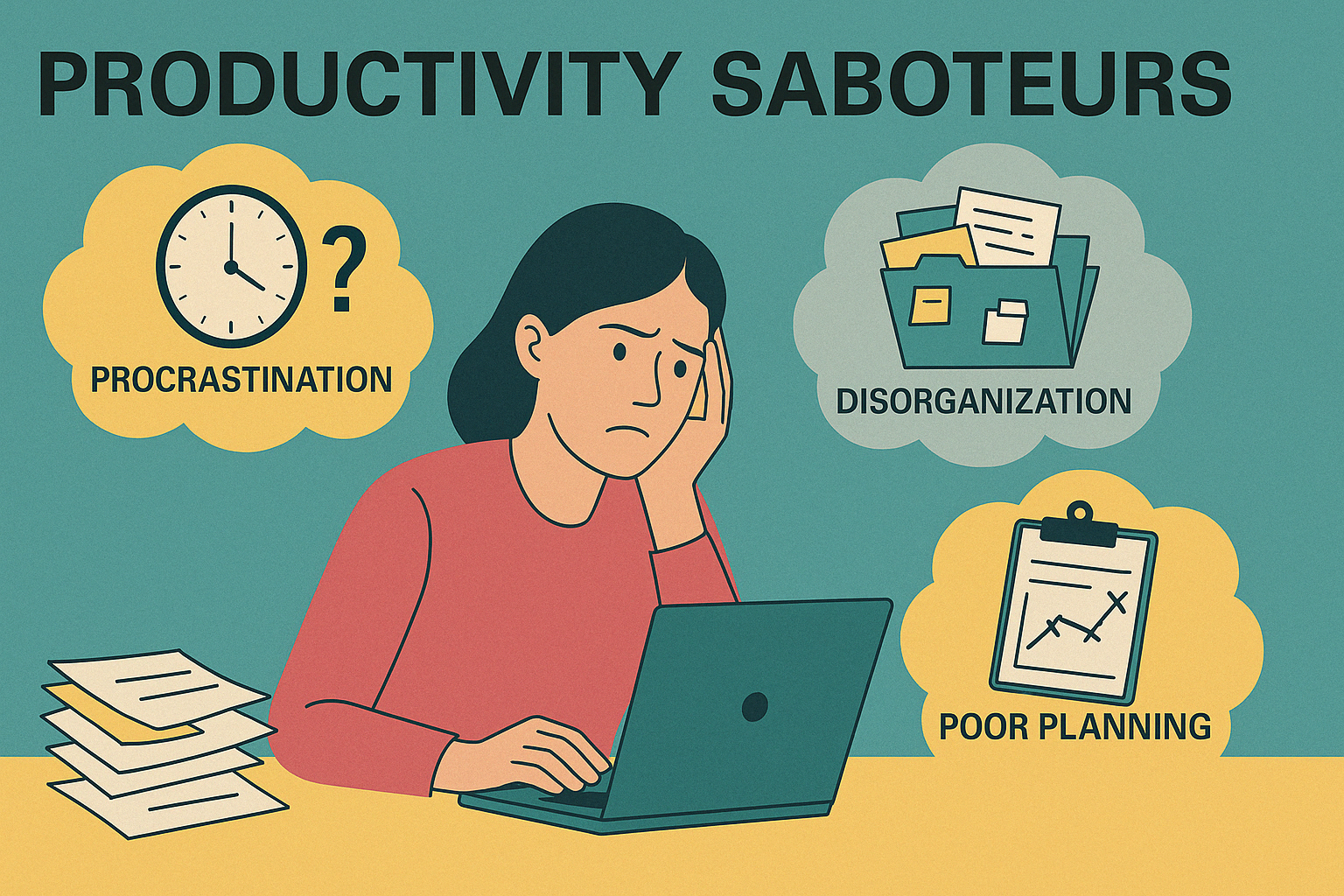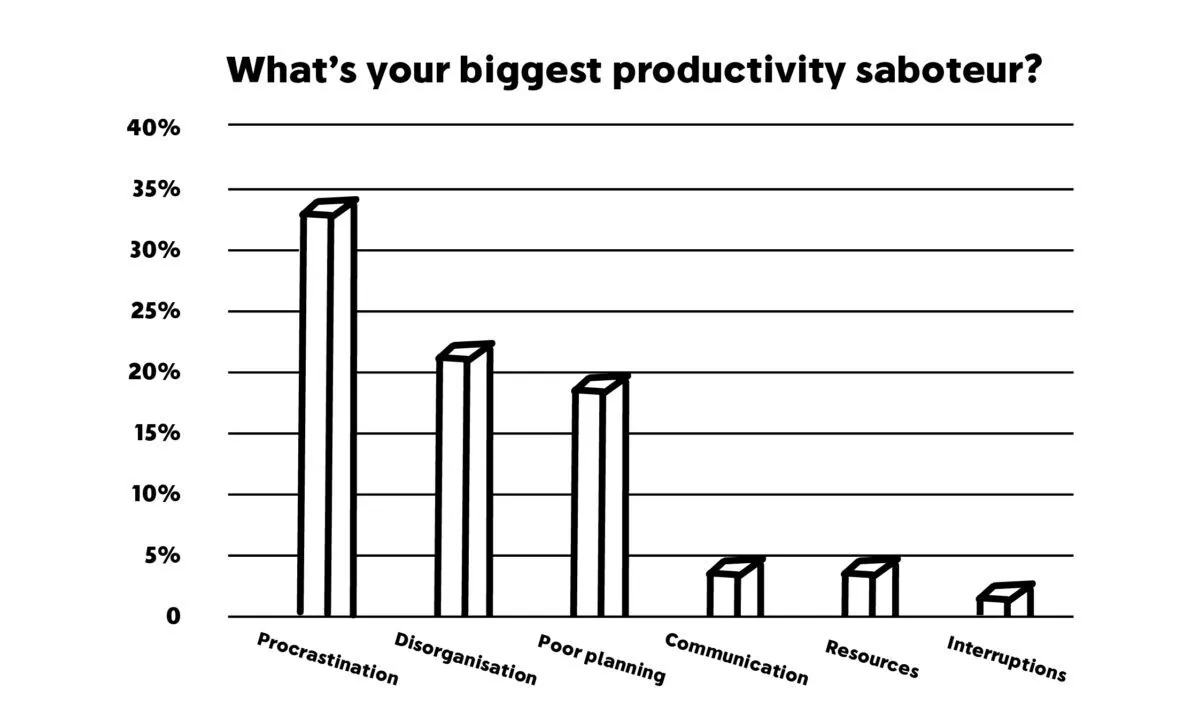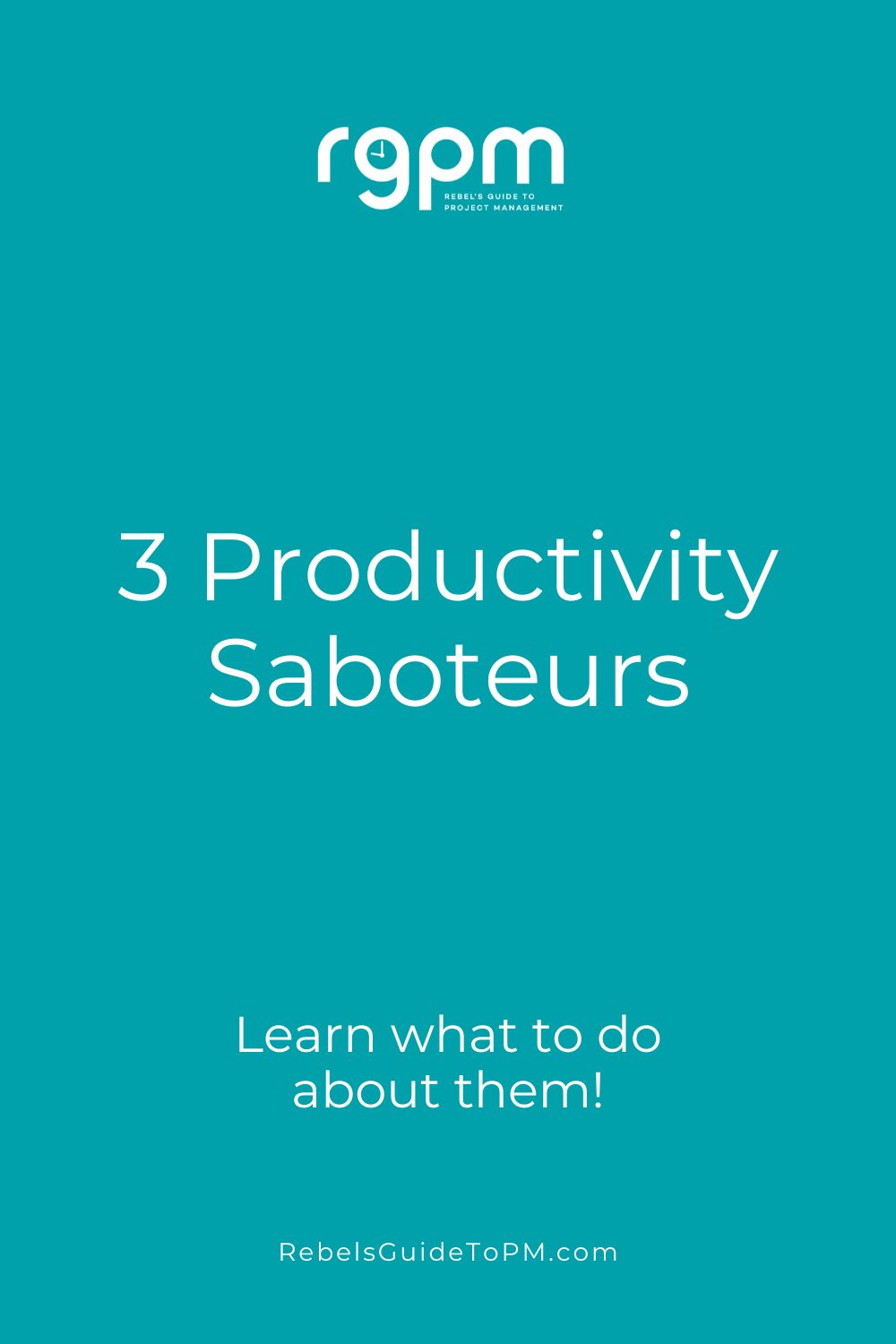3 Productivity Saboteurs and What To Do About Them
This blog is reader-supported. When you purchase something through an affiliate link on this site, I may earn some coffee money. Thanks! Learn more.
Why is it that some days you just aren’t that productive? Maybe your productivity saboteurs are at work. There are plenty of things at work that make it hard for you to progress your projects – the skill is in being able to identify and tackle them so you can keep moving forward.
In this article I’ll explain the top three reasons why people aren’t as productive as they would like to be: procrastination, disorganization and poor planning. You’ll also learn some tips for dealing with each of those so you can work efficiently.
1. Procrastination
Procrastination is the biggest productivity killer for over a third of project managers, according to research I did for my book, Managing Multiple Projects.
Get your copy
Managing Multiple Projects: How Project Managers Can Balance Priorities, Manage Expectations and Increase Productivity is a book that offers a comprehensive framework for juggling your workload and still leaving the office on time.

Procrastination can be characterized by general dithering about, putting off tasks and choosing to work on other things because they are easier or shorter, and not making progress.
Humans seem to be wired to find easy ways to do things, and sometimes doing a completely different task is easier than the big, difficult thing you’ve got at the top of your To Do list.
What to do about it
If it feels like procrastinating is a challenge you share, here are some tips for managing procrastination.
- Write down your goal or the vision for your work and stick it up near your desk. Being able to see your targets can help you stay on track.
- Make the most of your calendar. Plan time so you have blocks of hours available to work on certain things. Use colour coding to help keep you on track.
- Get enough sleep. When you are tired, you’ll fall into the habit of doing the easy work because you don’t have the cognitive capacity to deal with anything that takes strategic thinking or a bit of brainpower.
- Eat regularly. You’ll know how your body reacts without food: skipping lunch is rarely a good idea, especially if it makes you cranky.
- Break big tasks into smaller ones. People procrastinate because it feels too difficult to make progress on activities that feel too big. If you can break the work down into smaller activities, you might find it easier to make some progress.
Focus on the consequences of not doing something. There might not be any consequences, in which case, you have to ask yourself, why am I spending time on this?
However, there are probably going to be substantive consequences for you and for your project if the work doesn’t get done. If you’re aware of those, that could give you a little bit of pressure for making sure that you make time to do your tasks.

2. Disorganization
Over one in five project managers say that their biggest productivity saboteur is being disorganized. Given that being organized is pretty much a key skill for someone managing projects, that might come as a surprise.
However, when things are busy at work, corners are cut – often with good intentions. Later, that causes problems because the task wasn’t completed in exactly the right way.
Being disorganized leads to not being able to find important information in a timely fashion. It can contribute to missing deadlines, because you didn’t remember, or didn’t know, they were coming. It can result in turning up late for meetings, not working on the right things, or duplicating tasks that someone else has already completed.
What to do about it
Here are some things that you can do to help and resolve disorganization if you recognize that as one of your productivity saboteurs.
- Create alerts and calendar notifications to act as reminders. Don’t use the default: set reminders for a few days in advance if you struggle to send out meeting agendas on time, for example.
- Pick one thing and build in the structure that is missing. For example, start filing documents or attachments, or create a contact list of people you work with.
- Choose one method for taking notes and stick to it, whether that’s a notebook, an app, dictation which you transcribe, or something else.
A lot of the feelings of overwhelm and disorganization stem from technology. Modern collaboration tools are designed to be intuitive and need little training, and unfortunately that’s meant that employees are often left to their own devices to work out how to effectively use the tools they are given.
While you can pick up the basics with very little learning curve, there are often helpful shortcuts and best practices available – if only you knew about them.
Being able to confidently use your software tools can make the difference between feeling like data is lost forever and being able to quickly save and retrieve important information, and stay more organized.

3. Poor planning
Poor planning is the productivity saboteur that 20% of project managers find the biggest challenge. It results in having to do rework, and causing confusion because you’re not exactly sure where to start, so you might start on something that’s not the right task for now.
Poor planning can really affect how much progress you’re making.
Often plans fail because the right people were not involved in creating them. You’ve probably been in a situation where someone tells you what needs to happen by when: it’s not a good feeling because it removes your agency.
This impact on motivation and commitment may be the difference between hitting a date and not hitting it, so if you can encourage others to tell you when their pieces of the project will be completed, that’s a starting point for your scheduling.
What to do about it
Unsurprisingly, the fix for poor planning is to plan! Here are some tips.
- Create a plan, even if you know it will change. Choose the right level of detail for the uncertainty you are working with and check out rolling wave planning as a technique for scheduling when you don’t have all the details.
- Try to influence your environment to bring more stability to the work. This might take a few difficult conversations with internal customers or senior leaders to highlight the challenges of trying to get things done when everything changes.
- Agree a process for dealing with changes to the plan so you have a structured approach for incorporating new requirements.
- Consider what working practices are helping you and what are leading to more confusion. Focus on the collaboration approaches that help you the most and ditch the habits that don’t serve you.
We’re not stuck with productivity problems. Your working style can be changed if you want it to change. Give yourself permission to be more organized – sometimes disorganization is a learned habit.
If you can get out of the habit and try to set yourself up with systems, then you can perhaps be more efficient with how you make things work.
Everyone works and thinks in different ways. Try different approaches, test and iterate, and ditch what doesn’t work for you.

